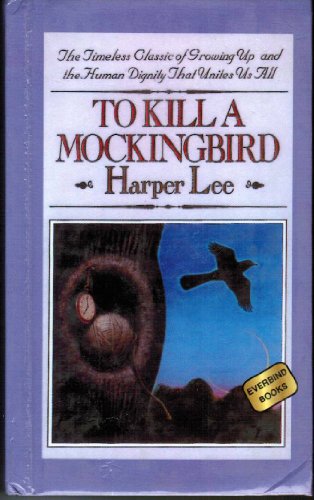Harper Lee's classic novel of a lawyer in the Deep South defending a black man charged with the rape of a white girl. One of the best-loved stories of all time, To Kill a Mockingbird has earned many distinctions since its original publication in 1960. It won the Pulitzer Prize, has been translated into more than forty languages, sold more than thirty million copies worldwide, and been made into an enormously popular movie. Most recently, librarians across the country gave the book the highest of honors by voting it the best novel of the twentieth century.
This is one of the only books assigned to read for English
class that I actually really enjoyed (the other two being A Tale of Two Cities
and The Hunger Games). However, I absolutely hated it the first time I read it,
in seventh grade.
But going back a few years later and thoroughly reading it
again, I really enjoyed it. Loved it, even. Okay, I admit it. This is one of
the best books I’ve ever read and probably even is on my Top 20 books list. Unfortunately, it was obviously not the cover that drew me
to want to read this book. TKAM was
I’d describe this as a more principled and historical version
of the Ramona Quimby series with Southern spice sprinkled on top. Scout Finch,
who narrates the novel, reminds me in many ways of Ramona because of her
youthful innocence and amusing behaviors. However, unlike Ramona, Scout grows
dynamically throughout the novel (it takes place over a few years) and learns
to become a compassionate and understanding young girl (No offense, Ramona).
My absolute favorite thing about this novel would probably
be the strong themes that Lee wove in throughout the novel—the coexistence of good and evil, social
inequality, human morality, perspective, courage and bravery. The things that
make up society. Heck, the moral themes in this book were probably as strong as
the teachings in the Bible!
2 of my favorite quotes:
“I wanted you to see what real courage is, instead of getting the idea that courage is a man with a gun in his hand. It’s when you know you’re licked before you begin but you begin anyway and you see through no matter what. You rarely win, but sometimes you do” (149).
“You never really understand a person until you consider things from his point of view—until you climb into his skin and walk around in it”(39).
And while some may arguably complain that it is too
preachy-preachy, I didn’t think it was overdone. Lee made sure to keep the
reader entertained while still encompassing the moral themes.
For example, the comical scene where Scout dresses up as a ham for a Thanksgiving play but falls asleep, misses her cue, and runs on the stage as the play is about to close, making everyone burst into laughter.
This is a great novel not only about growing up but also
about being an admirable human being, and everyone should definitely give it a
go.
PS (If you haven’t read Kami Garcia and Margaret Stohl’s Beautiful Creatures yet and are planning
to, read this first because there are so many references to this novel.)




No comments:
Post a Comment
Comments make our day :)